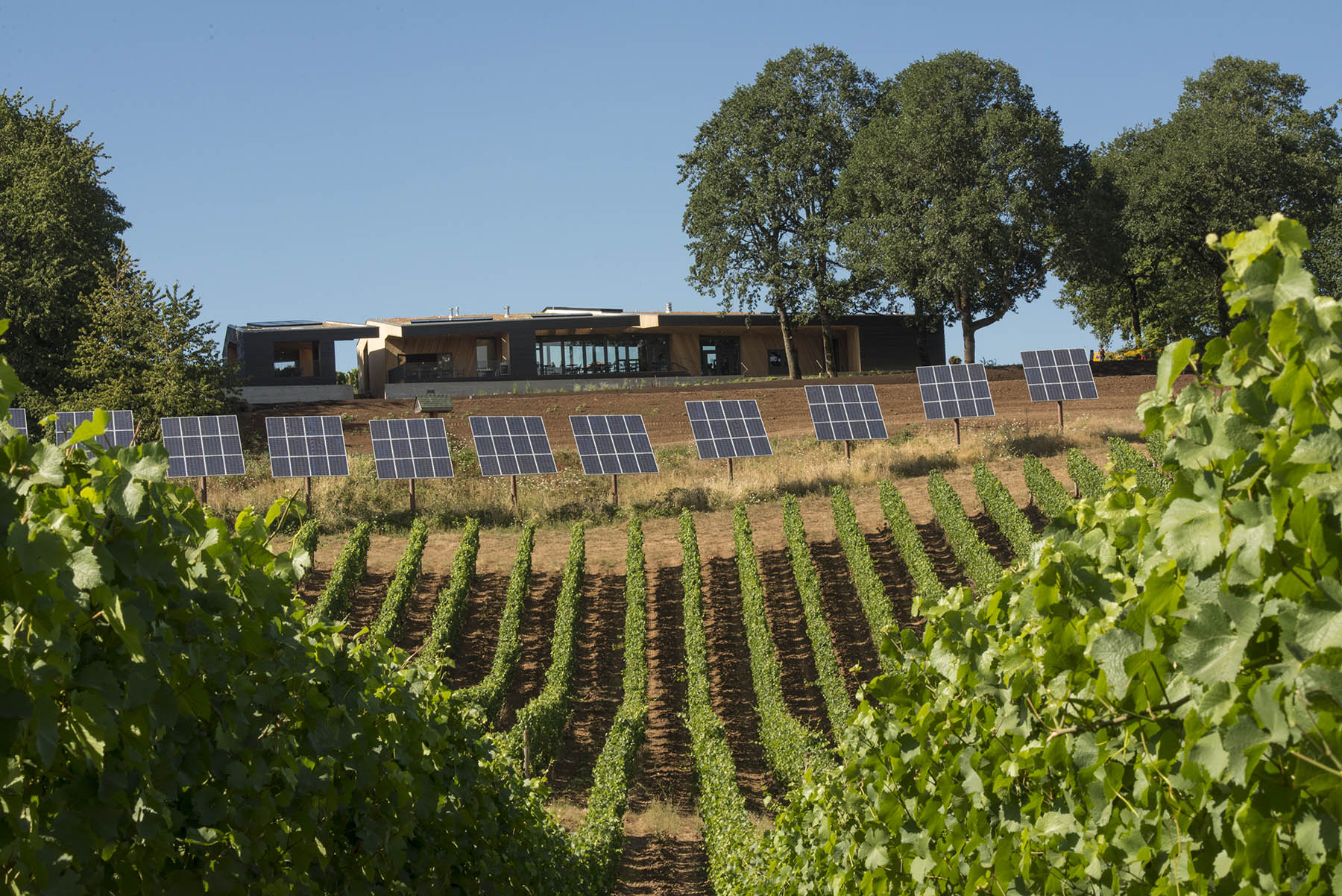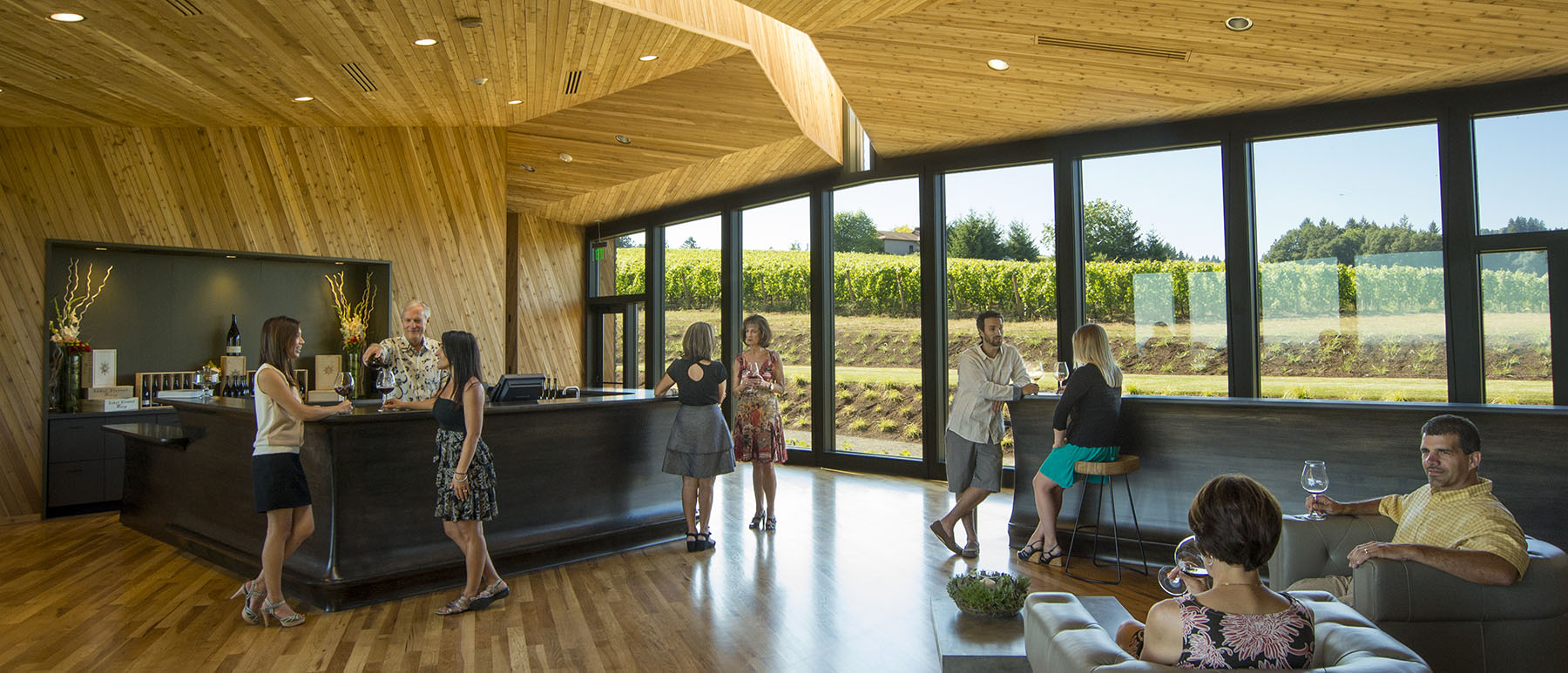Over 40 years ago, the Sokol Blosser winery began its journey to becoming a world-class vineyard and an industry leader in sustainability. They had a passion for growing Pinot Noir grapes and creating fine wine which helped shape Oregon’s now-prominent wine industry. They also had a commitment “being good to the earth” and striving for sustainable design and operation of their winery. This standard has led to the recent launch of their new wine-tasting room that is pursuing the Living Building Challenge Petal Recognition, including net-zero energy efficiency.
The Living Building Challenge is just that – a challenge. Well-known in the industry, The Living Building Challenge is a green building philosophy, advocacy platform and rigorous certification program. To date, only four buildings in the world have received full Living Building Certification and just three others have received Petal Recognition. Fortunately, the difficulty of the challenge centers around achieving measured results, not to adhering to a rigid design process. Certification or Petal Recognition is only awarded after energy performance is proved, which requires continuous occupancy and energy data over a minimum of 12 months. For Sokol Blosser, achieving the Petal Recognition with a focus on net-zero energy was a priority. Because the challenge’s requirements are so rigorous, it takes a strong commitment from the owner along with a competent and communicative design team to see it through.
Sokol Blosser, Allied Works Architecture and Glumac’s energy engineering consultants worked together to create this world-class, sustainable space. To target design for Petal Recognition, the first step was to look at Sokol Blosser’s energy consumption and ability to generate energy through existing on-site photovoltaic (PV) arrays. Based on analysis of the panels’ past production and the project building area, Glumac determined that the existing array could produce enough electricity to support a building energy use intensity (EUI) of just 20 kbtu/sqft. For the engineers and architects among us, this is a tight budget for any building.

Estimating consumption was the next step. Glumac’s goal was to support Allied Works and Sokol Blosser achieve their design and energy goals by providing a road map for how to use their capital in the most efficient ways. Working from historical data and future operational plans for the space, Glumac outlined estimates of how much each system would consume and provided suggestions for how those systems could potentially be improved. The largest energy consumption sources were the HVAC system and lighting fixtures. Focusing on these items, Glumac identified that lighting upgrades could shave 10% off the total energy use, that a higher efficiency HVAC system could reduce consumption by an additional 3-5%, and finally how much PV could be potentially added to build in greater energy generation capacity.
Following these recommendations and a minimum of 12 months of energy data, Sokol Blosser will be on target for achieving the goal of net-zero energy and further establishing their green leadership in the wine industry. Congratulations to Allied Works Architecture’s beautiful design and Sokol Blosser’s commitment to pioneering a sustainable vision…and of course to their fantastic wine!
For more information about achieving net-zero building performance, you can reach us at [email protected].

